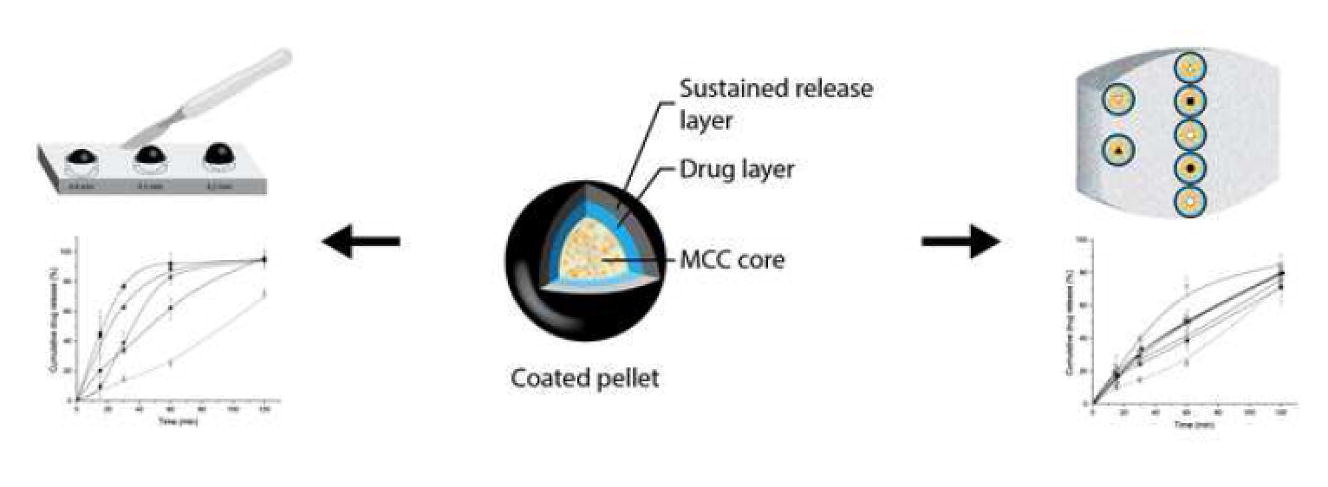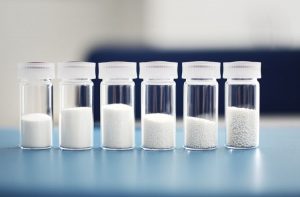A Mechanistic Understanding of Compression Damage to the Dissolubility of Coated Pellets in Tablets

Damage to the drug diffusion coat barrier of controlled release pellets by the compaction force when preparing multiple-unit pellet system tablets is a major concern.
Previous studies have shown that pellets located at the tablet axial and radial peripheral surfaces were more susceptible to damage when compacted due to the considerable shear encountered at these locations. Hence, this study was designed to assess with precision the impact of pellet spatial position in the compact on the extent of coat damage by the compaction force via a single pellet in minitablet (SPIM) system.
Microcrystalline cellulose (MCC) pellet cores were consecutively coated with a drug layer followed by a sustained-release layer. Chlorpheniramine maleate was the model drug used. Using a compaction simulator, the coated pellets were compacted singly into 3 mm diameter SPIMs with MCC as the filler. SPIMs with individual pellets placed in seven positions were prepared. The uncompacted and compacted coated pellets, as SPIMs, were subjected to drug release testing.
The dissolution results showed that pellets placed at the top-radial position were the most susceptible to coat damage by the compaction force, while pellets positioned within the minitablet at the middle and upper quadrant positions showed the least damage. The SPIM system was found to be effective at defining the extent of coat damage to the pellet spatial position in the compact. This study confirmed that coated pellets located at the periphery were more susceptible to damage by compaction, with pellets located at the top-radial position showing the greatest extent of coat damage.
However, if the pellet was completely encrusted by the cushioning filler, coat damage could be mitigated. Further investigations were directed at how the extent of coat damage impacted drug release. Interestingly, small punctures were found to be most detrimental to drug release whilst coats with large surface cuts did not completely fail. A damaged pellet coat has some self-sealing ability and failure is not total. Thus, this study provides a deeper understanding of the consequence of coat damage to drug release when sustained release coated pellets are breached. More on coated pellets in tablets
More on Cellets – Microcrystalline Cellulose Pellets


